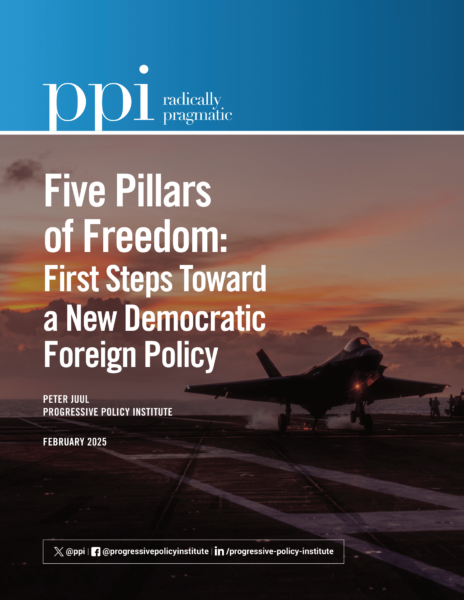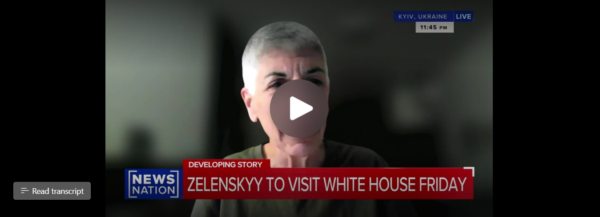From our Budget Breakdown series highlighting problems in fiscal policy to inform the 2025 tax and budget debate.
Senate Republicans and “moderate” House Republicans who are uncomfortable with the $4.5 trillion cost of extending the expiring tax cuts enacted during Trump’s first term are pushing a new strategy: pretend it is free. Normally, the cost of legislation is measured as the amount passing the legislation would increase the deficit relative to a scenario where the legislation did not pass, which is known as a “current law” baseline. But Republicans instead want to score their upcoming tax bill against a “current policy” baseline that assumes every policy in effect today continues in perpetuity.
Although advocates of this approach suggest it would “zero out” the cost of extending expiring tax cuts, the reality is that it would do nothing to change the actual cost. If Republicans pass a bill with policies that are “fully offset” relative to current policy, the national debt as a percent of gross domestic product would increase by nearly twice as much compared to if they did nothing.
Aside from helping Republicans justify their budget-busting plans to themselves and the public, adopting a current policy baseline could potentially clear some legislative procedural hurdles. Budget reconciliation bills, which can be passed by a simple majority in the Senate without being subject to a filibuster, are not allowed to increase deficits over 10 years by more than the amount permitted in a previously-passed budget resolution. These constraints are the reason Republicans scheduled many tax cuts to expire at the end of this year when they passed the Tax Cuts and Jobs Act in 2017.
By using a current policy baseline – instead of the current law baseline used in 2017 and for every other piece of legislation – Republicans are hoping to hide the true cost of extension so they can bypass reconciliation constraints and clear the path for their legislative agenda. Most experts believe budget rules do not allow lawmakers to subjectively select their preferred baseline like this. But if Republicans are somehow able to do so, either by exploiting legal loopholes or overruling the Senate parliamentarian, the results could annihilate any fiscal guardrails in future legislative debates.
Consider this scenario: After enacting the American Rescue Plan in 2021, which cost $1.9 trillion compared to a current law baseline, Democrats could have said that not extending the law’s one-time spending provisions would “save” up to nearly $20 trillion over the following decade compared to a current policy baseline. They could then have used these phony savings as an “offset” for a bill four times as expensive as Joe Biden’s original “Build Back Better” plan. Effectively, Republicans would be setting a precedent that enables far-left Democrats to enact prohibitively expensive proposals like the Green New Deal or Medicare-for-All and claim they cost virtually nothing, even as the national debt would balloon.
Some Republicans have argued that making tax cuts permanent is so important for economic growth that the benefits of extending them should outweigh any potential consequences. But according to the nonpartisan Congressional Budget Office, extending the tax cuts without offsets would be unlikely to generate any long-term economic growth at all – and could even reduce it, as higher borrowing costs outweigh any positive economic impact. Moreover, when the federal budget is on such an obviously unsustainable trajectory, no fiscal policy can be considered permanent. At some point in the not-too-distant future, some combination of tax and spending policies that currently have no expiration date will have to change to prevent, or react to, an economic crisis caused by exploding debt. If Republicans really wanted their tax cuts to be permanent, they would figure out how to pay for them.
Deeper Dive
- Johnson open to zeroing out the cost of extending Trump’s tax cuts, by Politico
- Republicans may try budget math that doesn’t count Trump tax cuts, by the Washington Post
- “Current Policy Baseline” Gimmick Could Explode the Debt, by the Committee for a Responsible Federal Budget
- Republican Tax Legislators’ Potential Framework for Extending Trump’s Tax Cuts Is a Gimmick That Would Cost More Than Advertised, by the Center for American Progress
- How the Expiring Individual Income Tax Provisions in the 2017 Tax Act Affect CBO’s Economic Forecast, by the Congressional Budget Office
Fiscal Fact
Under a current policy baseline, the national debt will increase by more than $26 trillion over the next 10 years.
Further Reading
- Trump’s Trade War Draws Swift Retaliation as Mexico, Canada and China Impose Tariffs on the US, by AP
- Economic growth is slowing — so Trump wants to redefine “economic growth”, by Vox
- Businesses Are Betting on a Tax Cut Extension, by the New York Times
- How Uncertainty From Trump’s Tariffs Is Rippling Through the Economy, by the Wall Street Journal
More from PPI & The Center for Funding America’s Future
- Republicans Reckon with the Costs of Their Tax Cuts, by Ben Ritz and Alex Kilander
- IRS Layoffs Threaten to Inject Chaos Into Tax Filing Season and Cost Taxpayers Billions, by Ben Ritz and Alex Kilander
- PPI Statement on President Trump’s Continued Reckless Tariffs Campaign, by Ed Gresser
- Energy Costs Come First: Data by State, by Elan Sykes
- Isolationism and Appeasement are Dangerous, by Ed Gresser








